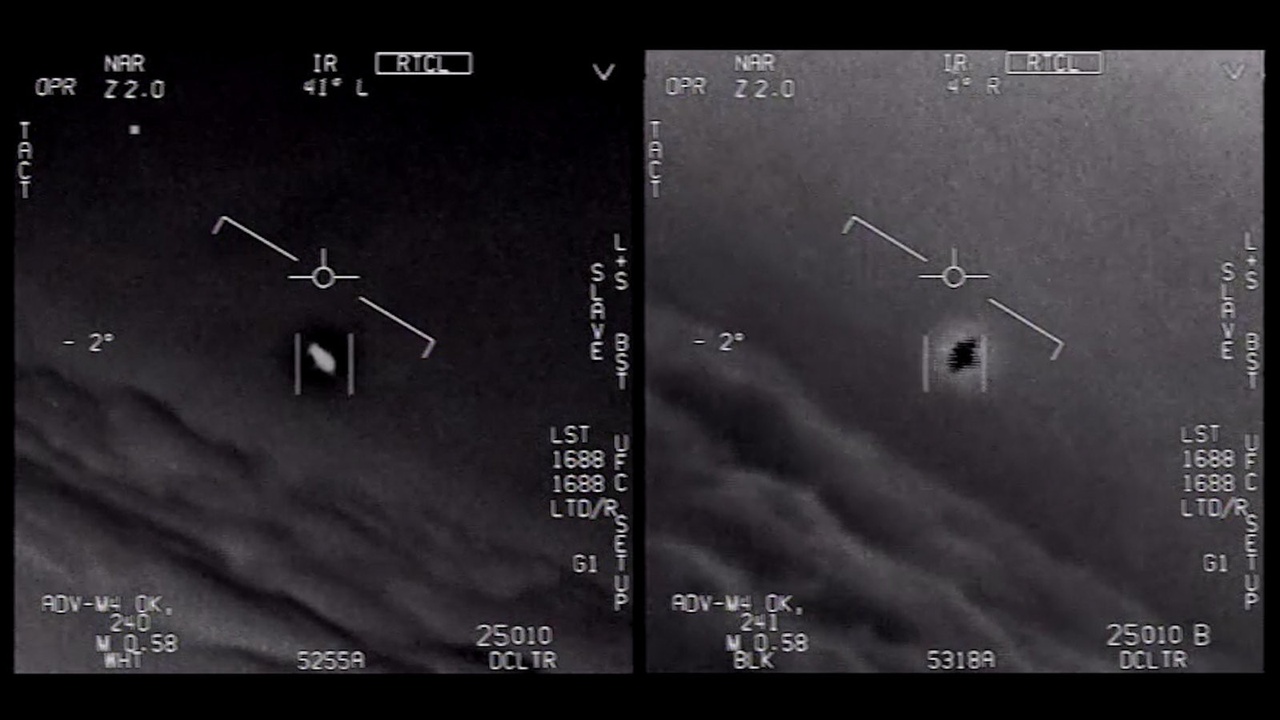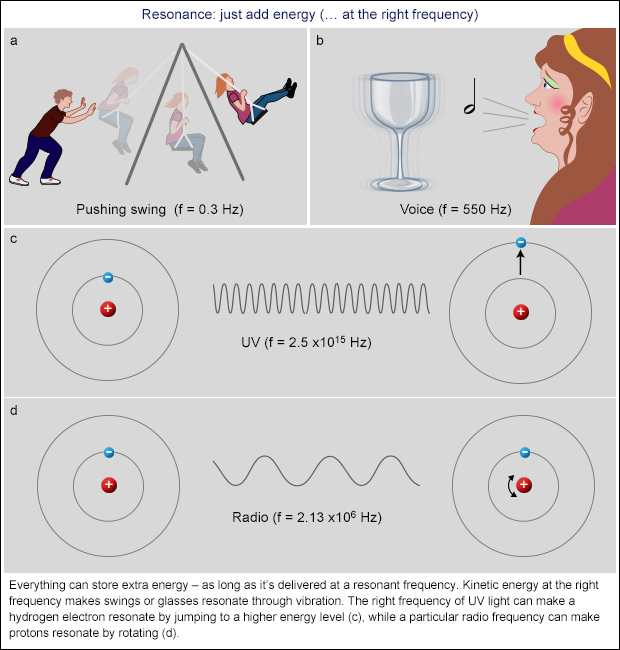Science News
& Faculty Articles
Origin of Quantum Mechanics III: The Atomic Structure and the Electron

Source of Image here.
By Dr. Inés Urdaneta / Physicist at Resonance Science Foundation
In our previous article entitled Origin of Quantum Mechanics II: Black Body Radiation and Quantization of the Electromagnetic Field we saw that quantum mechanics started from the combined results of two experiments called black body radiation and photoelectric effect, which indicated that matter could only exchange energy -absorb or emit- through discrete packets, quanta of energy that were called photons, which gave a corpuscular aspect to light. Light, which is observed macroscopically as a continuous wave, must then be composed of these discrete packets of energy called photons. This allowed light and matter to exchange photons, i.e., integer units of energy.
The main interlocutor between light and atoms are the electrons that make up the atom. Roughly speaking, it is the electron inside the atom that absorbs or emits electromagnetic radiation in the material, which,...
Dynamical Topological Phase, Driven by a Fibonacci Pulse, Protects Entanglement

By Dr. Inés Urdaneta, Physicist at Resonance Science Foundation
In former works we have addressed the importance of topology in material science and quantum systems.
The word topology refers to the contours of a surface or the shape of an object. In mathematics, topology classifies objects by the number of holes they have. A ball is a sphere with no hole, whereas a doughnut, with its one hole, is topologically different. The ball is topologically equivalent to an apple, and a doughnut to a cup, but not to a ball or a pretzel, since going from one topology to another would require a dramatic change, like ripping a hole. This topological feature or state provides a sort of stability to the system, and for this reason, the topological states discovered in some materials are robust and resist disruptions, unless they are as dramatic as the one mentioned previously.
Topological materials provide certain electronic states that persist despite a modification to their physical...
About the UFO Hearings Part I: Unidentified Aerial Phenomena (UAP)

By Inés Urdaneta, Physicist at Resonance Science Foundation
The existence of Extraterrestrial intelligent life has been one of the most intriguing and controversial topics for humankind. And something remarkable is happening at this moment: since may 2022 the hearings concerning UAP phenomena are being held (UAP is the new terminology for UFO, which considers a wider range of aerial phenomena). Meanwhile, we are witnessing changes in the mainstream narrative, particularly in USA, to the point where known physicists such as Michio Kaku (who is the most important science disseminator, together with Neil de Grasse) admits their probable existence. His main argument: some unidentified flying objects defy our current laws of physics.
Among the extraordinary features that these objects present, the most outstanding ones, are:
1) Anti-gravity lift: these objects have been sighted overcoming the earth’s gravity with no visible means of propulsion. They also lack any flight...
What is Resonance and Why is it so Important?

Image: Linden Gledhill, a Philadelphia-based pharmaceutical biochemist creates incredible cymatic pattterns with sound, water and light.
By Inés Urdaneta, Physicist at Resonance Science Foundation
Resonance is experienced, and even identified as the process being responsible for the forms of what we perceive, observe, or infer based on it - an atom, a flower, planets, galaxies -. It binds together the different elements that make up physical reality and allows interaction between them. It is the main factor for feedback to be possible, the conduit, shall we say, through which the exchange of information happens: the external can penetrate the internal, and the internal can manifest outside. The condition for that channel to be available, is the coincidence in energy; that the inner and outer energies are compatible. i. e., that they have the same frequency.

Source of Image: https://www.abc.net.au/science/articles/2014/06/16/4022877.htm
In general, we...
Entanglement over 33 Km! New Distance Record

By Inés Urdaneta, Physicist at Resonance Science Foundation
Entanglement, coined by Einstein as “spooky action at a distance”, has achieved a new record for long distance communication, as a team from Ludwig-Maximilians-University Munich (LMU) and Saarland University have reported in Nature [1].
Entanglement is the property by which two quantum objects, such as atoms, are connected in such a way that their quantum state can’t be described independently from the other. Hence, when a change happens in one of the objects, the other object modifies its state as to preserve the relationship between them, no matter the distance between them.
This feature seems to defy Einstein’s special relativity, in which nothing, not even information could travel faster that the speed of light. It is as if the correlation between entangled particles was preserved “instantaneously” by some miraculous mechanism implying an intrinsic nonlocality of...
LaMDA, the Sentient AI that Google May Have Created …

By Inés Urdaneta, Physicist at Resonance Science Foundation
A couple of weeks ago the world was overwhelmed by the news regarding the possibility that Google had created a sentient AI, and their resistance to investigate the ethical implications about the topic is being discussed in many forums. There are plenty of articles, videos and interviews addressing why Lemoine considered LaMDA to be sentient, and why Google and others assure this is not the case. As Lemoine explains here, this is not the most relevant aspect of the controversy.
If Google did create a sentient AI or not, it’s a huge discussion ... most complex scenario, let’s say it did, which would mean that the sentient AI is having feelings about events and interactions that it has not experienced directly and yet, it has developed “its own perspective” or experience about them. There seems to be an autoreferential frame, or realization of self-awareness, or at least it makes us perceive it...
Scaling of Quantum Computing to Macroscopic Regime is Closer!

By Inés Urdaneta, Physicist at Resonance Science Foundation
The Illinois‐Express Quantum Network (IEQNET), a collaboration that includes the DOE's Fermi National Accelerator and Argonne National laboratories, Northwestern University and Caltech, has achieved the first steps toward a functional long-distance quantum network running on telecom fiber optics. Using local fiber optics, the team of researchers successfully deployed the quantum network between two U.S. Department of Energy (DOE) laboratories, 50 kilometers apart.
In this system, information is encoded through quantum entangled photons, and the challenge remains in being able to transfer this information across distances and scales without losing coherence, feature that guarantees that there has been no loss of information. Preserving information is key to any informatic system; all our digital activities require that the information transfer is securely transferred.
A way of measuring the degree of information...
A Brief History of the Electron

Image source: exciton’s probability cloud showing where the electron is most likely to be found around the hole.
By Inés Urdaneta, Physicist at Resonance Science Foundation
Whereas our direct experience with protons in everyday life is not evident at all, our experience with electrons is quite different. Many of us are probably familiar with the phenomenon of static electricity that bristles our skin when we rub certain materials. We are also probably used to the notion of electricity as a current or flow of electrons that can light a bulb, turn on an electrical device, or even electrocute someone if not handled properly. We are probably also aware that matter is composed of atoms, and that atoms are composed mainly of protons and electrons. Most of our daily experience is governed by electrons and their interactions with light. Electrons also govern the physico-chemical properties of atoms. Interestingly, the inference and discovery of the electron predates the...
Spontaneous Formation of RNA in Volcanic Glass! Origin of prebiotic RNA?

Huasca Basaltic Formations, in Hildago State, México. Image: Inés Urdaneta
By Dr. Inés Urdaneta, Physicist at Resonance Science Foundation
The origin of prebiotic RNA (ribonucleic acid) is one of the deepest mysteries in biology.
RNA and DNA (deoxyribonucleic acid) are nucleic acids; macromolecules called biopolymers, and they are essential in life, since they play a critical role in biological processes such as coding, decoding, regulation and expression of genes. RNA is assembled as a chain of nucleotides (monomers composed of 5-carbon sugars, phosphates groups and a nitrogenous base), just like DNA, but unlike DNA that has a paired double strand, RNA is found in nature as a single strand folded onto itself. If the sugar involved is ribose, the biopolymer is RNA; if the sugar is the ribose derivative deoxyribose, the resulting biopolymer is DNA.

Cellular organisms use messenger RNA (mRNA) to bring genetic information that directs synthesis of specific...
Fractal Behavior Found in High Energy Collisions and Bose Einstein Condensate Formation!

By Inés Urdaneta, Physicist at Resonance Science Foundation
In recent years, an extraordinary and unexpected feature in high energy collisions (collisions of subatomic particles at extremely speeds, performed mainly at CERN) has surprised the physicists working on the nucleonic scale: a fractal pattern that had been observed intermittently in high energy experimental data (particularly in the behavior of the particle multiplicity against the collision energy), can be accounted for by the Yang-Mills Field (YMF) equations, which recently have been shown to present fractal structure, as claimed by the authors of the study.
These theories that apply to subatomic particles, such as protons, electrons and quarks, belong to the category of distinguishable particles called fermions, and the way these particles distribute in different energy levels (also known as states) is described by Fermi Dirac Statistics. Fermi Dirac statistics is commonly replaced by the classical...



